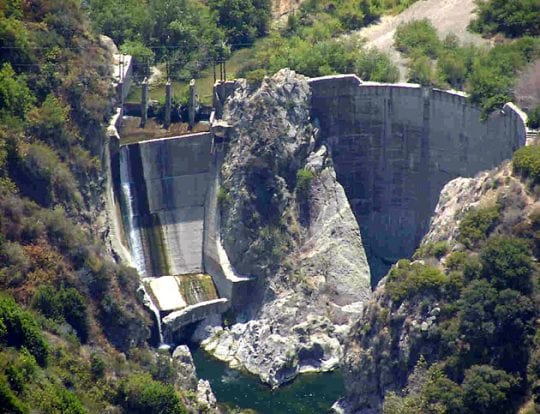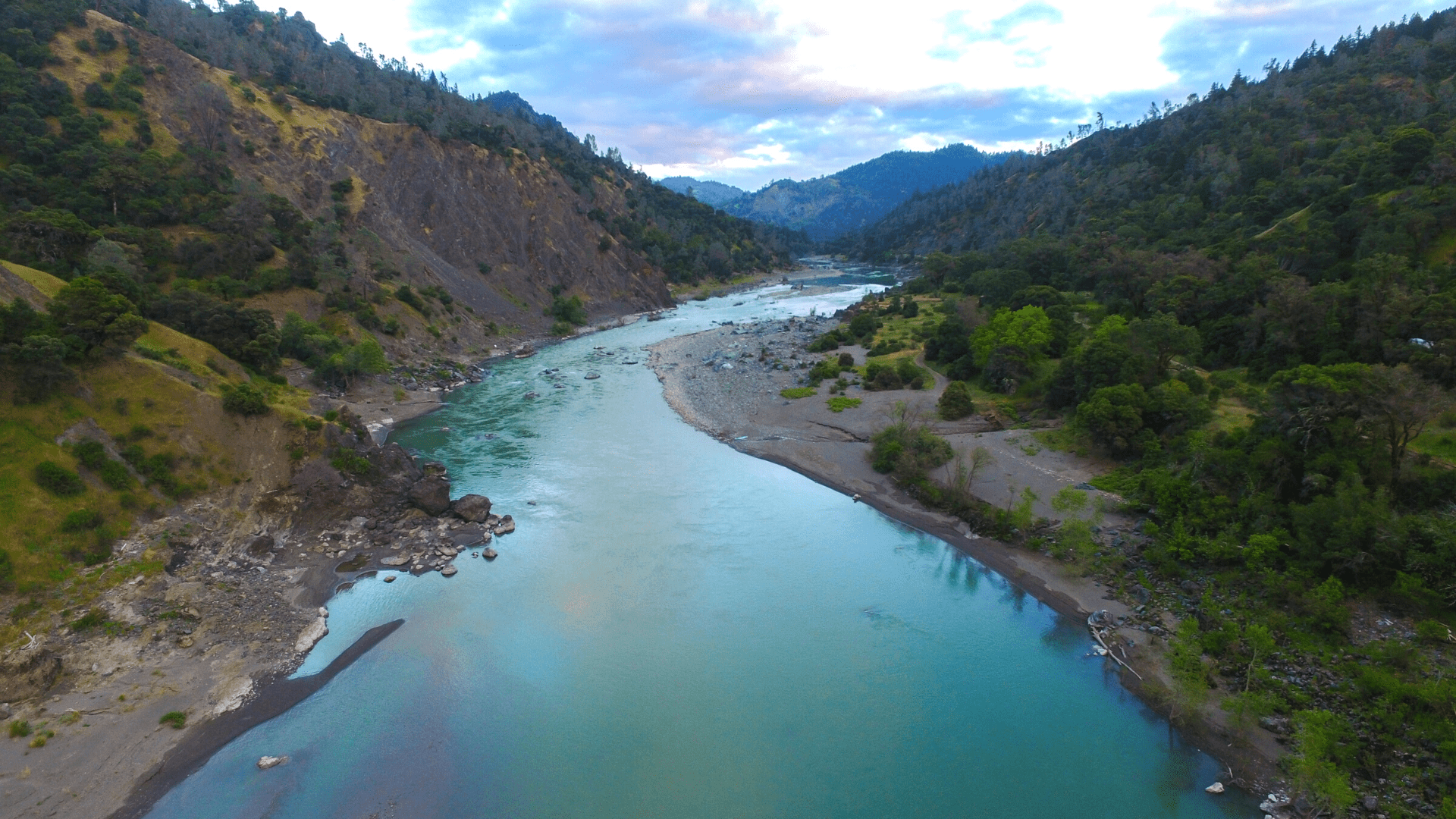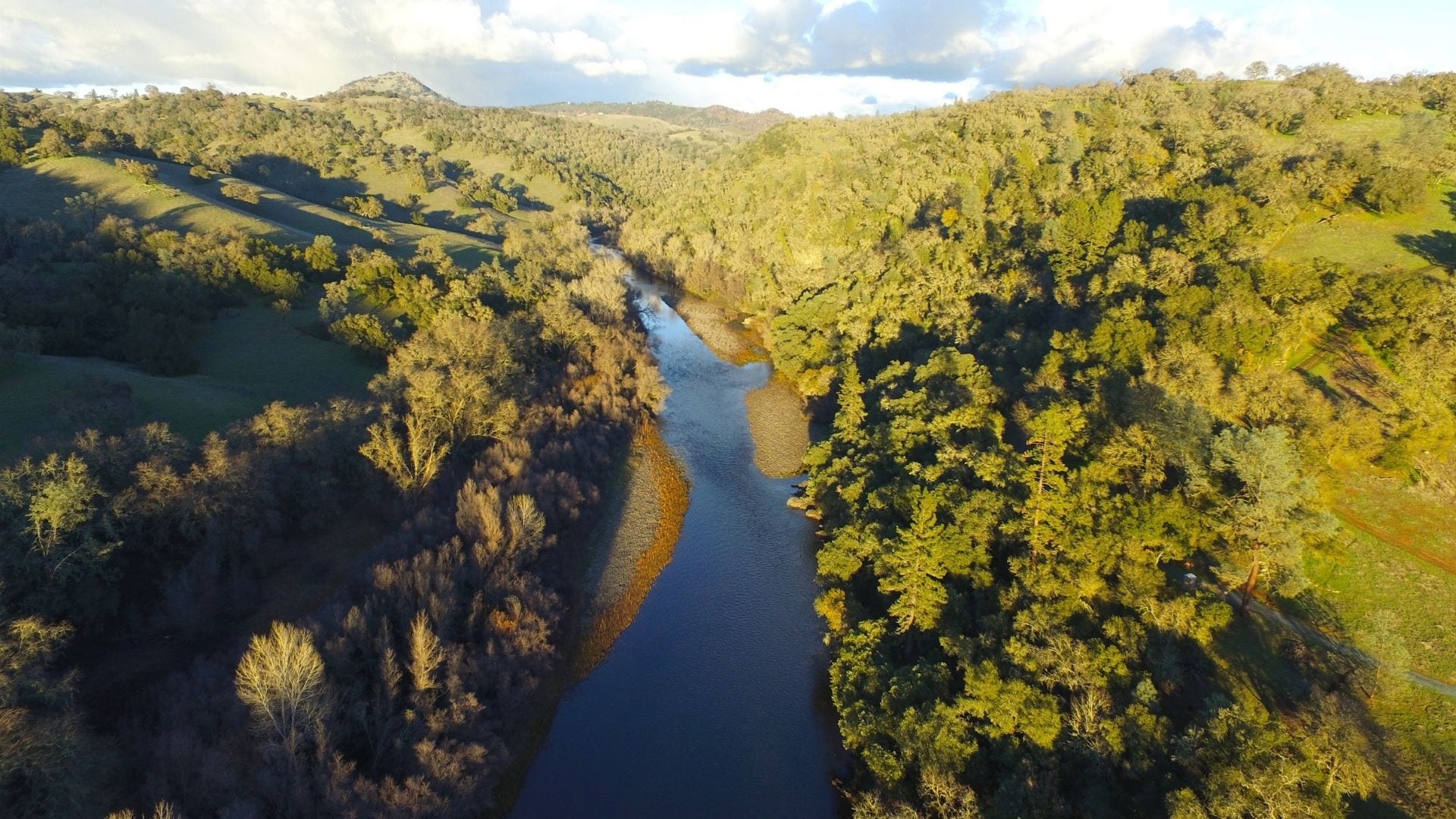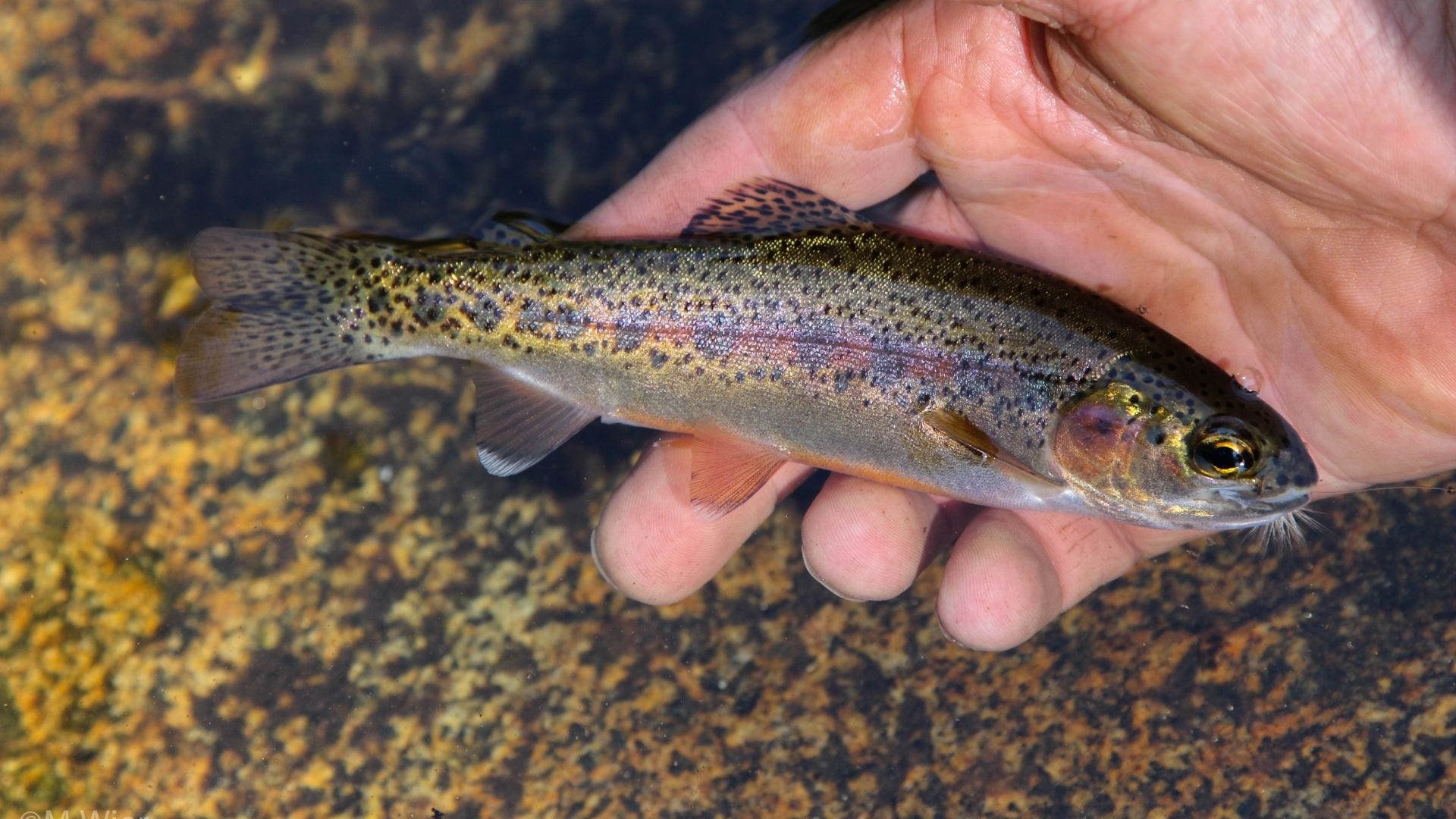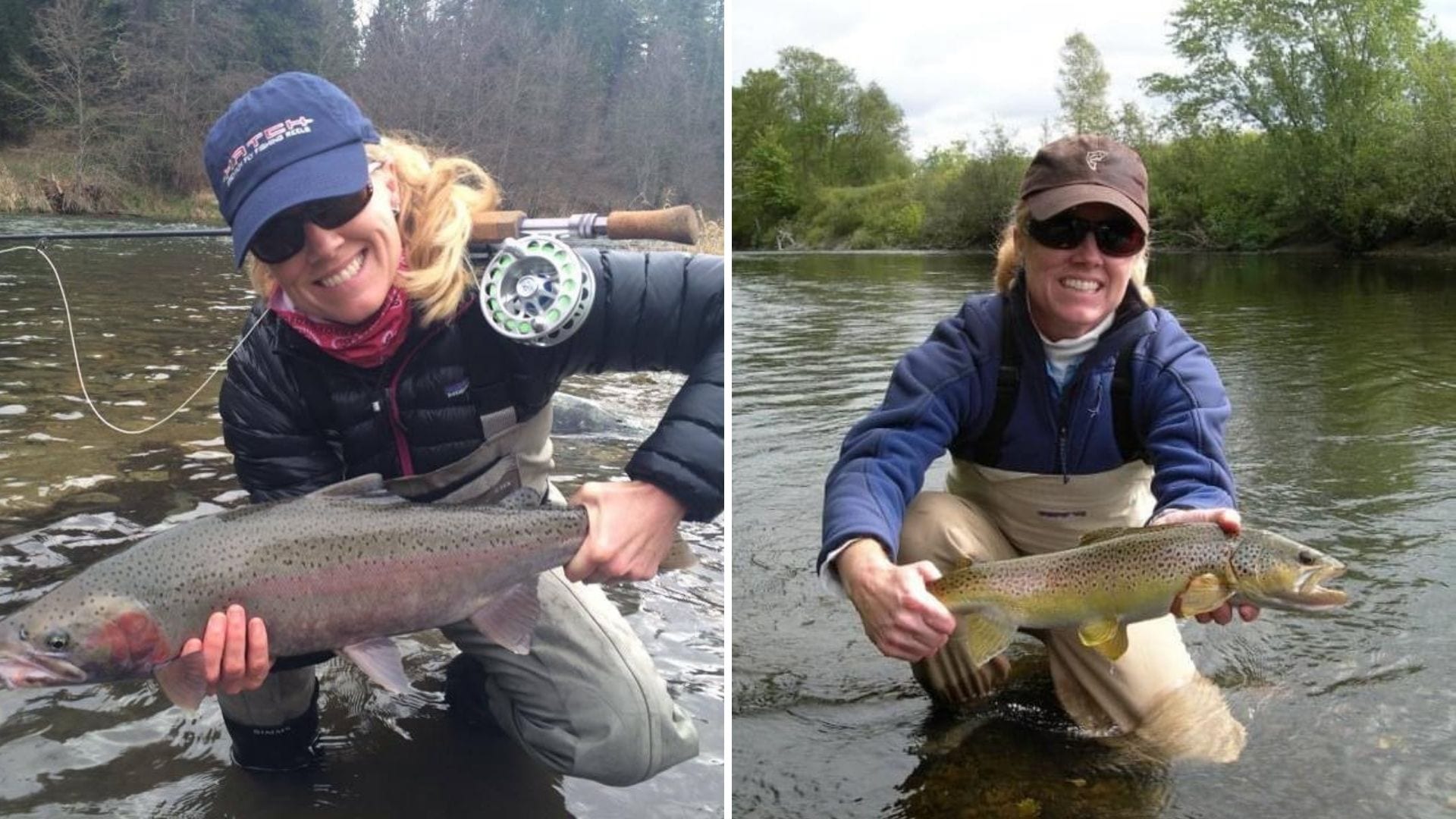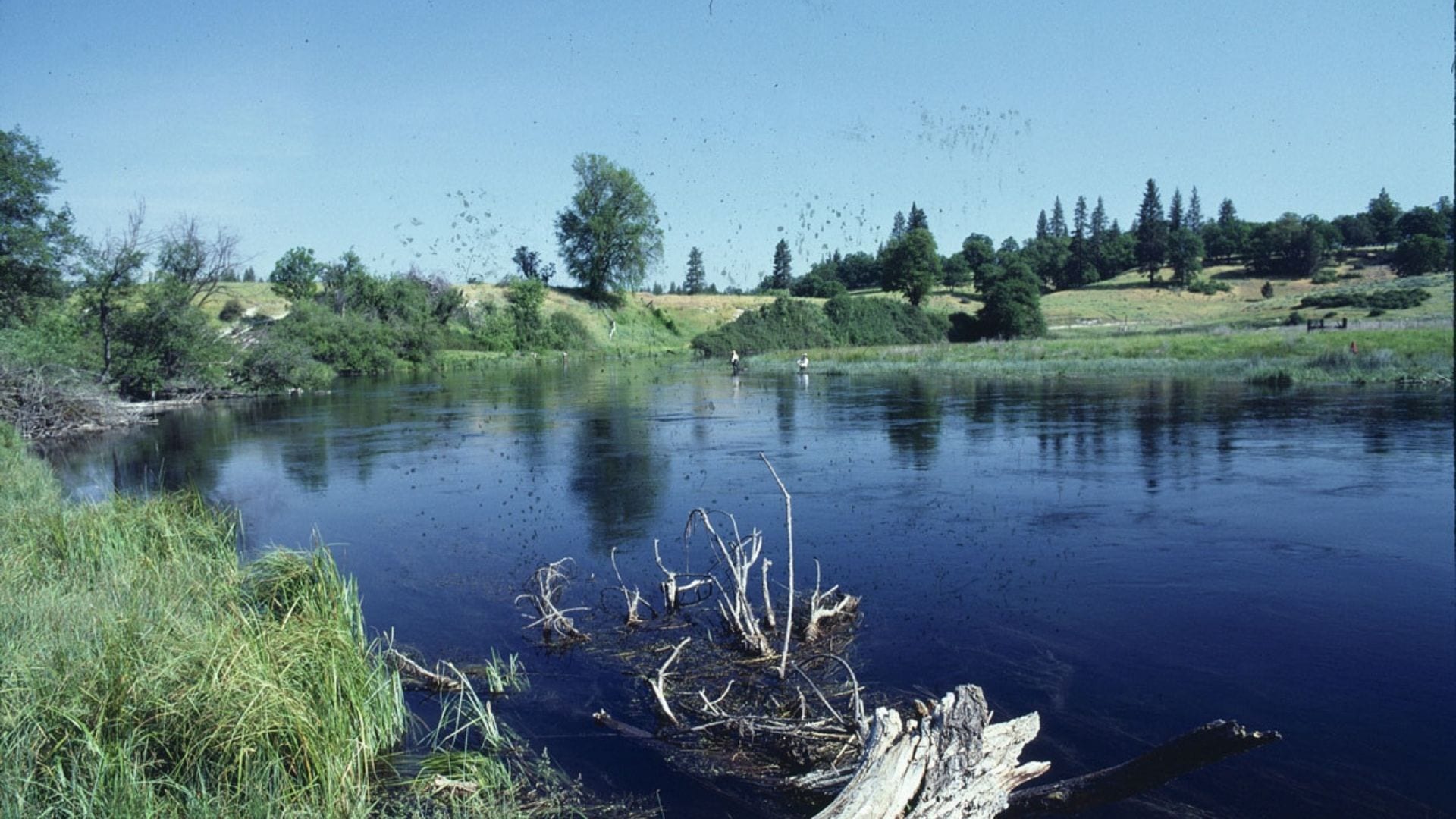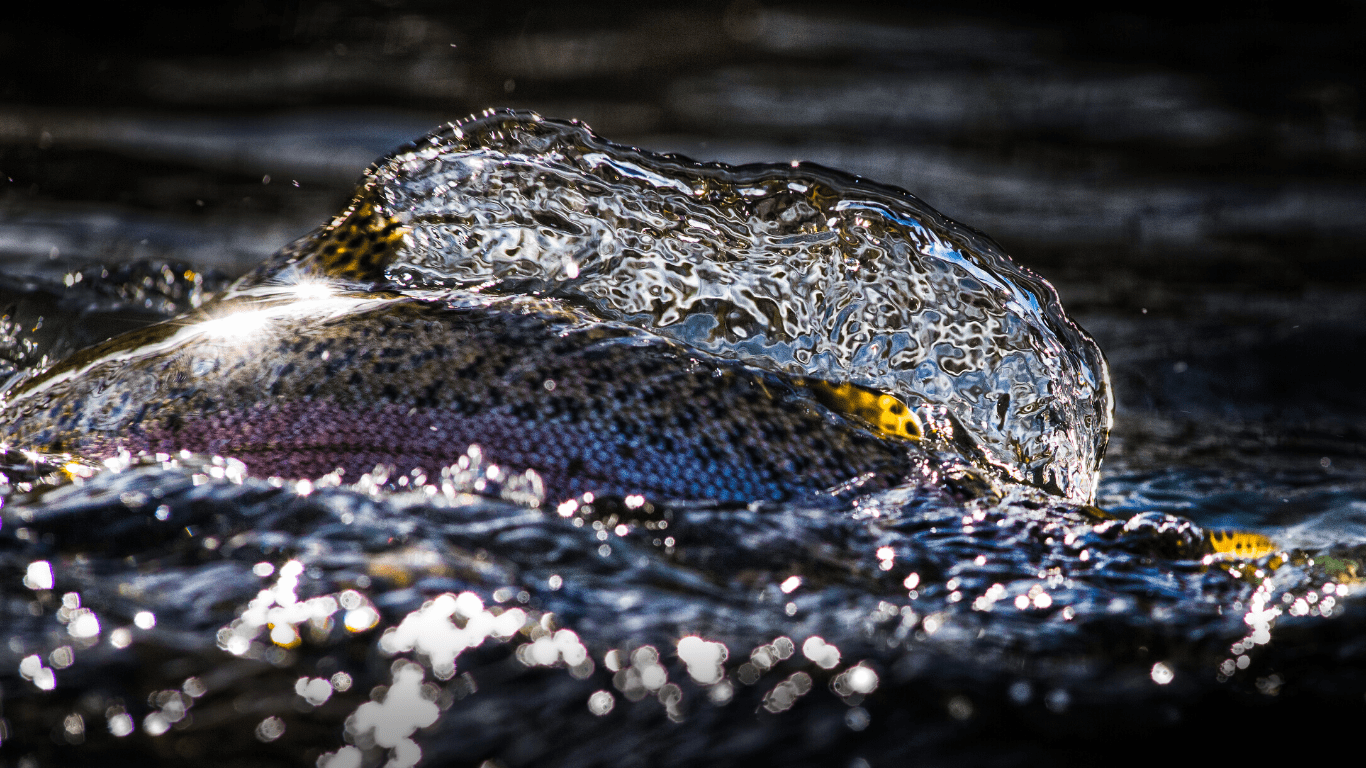By Dr. Sandra Jacobson,
CalTrout South Coast Regional Director
Listen to the audio interview: Dr. Sandi Jacobson on removing Rindge Dam
Dam Removal Status
Dams built along the Pacific Coast over the past 150 years were constructed for flood protection, water security and energy, yet the magnitude and scope of their disruption to ecosystems has been slow to realize and reverse. Some dam removal projects – such as the Klamath Dams – affect not only watershed processes but interweave environmental, geographical, political, cultural and economic issues.
Removal of Rindge Dam in Malibu Creek, an obsolete structure that has not functioned as intended for 80 years, is a less complicated case. The dam removal project is now poised to proceed into design phase, following recent authorization of the project’s feasibility study led by the U.S. Army Corps of Engineers and pending formal approval in Congress. This is a major milestone, but the hard work is now ahead to complete design, put together a successful dam removal team, restore migration of the endangered southern steelhead, and secure funding for the >$200M project.
Cover Photo: Rindge Dam by Mike Wier
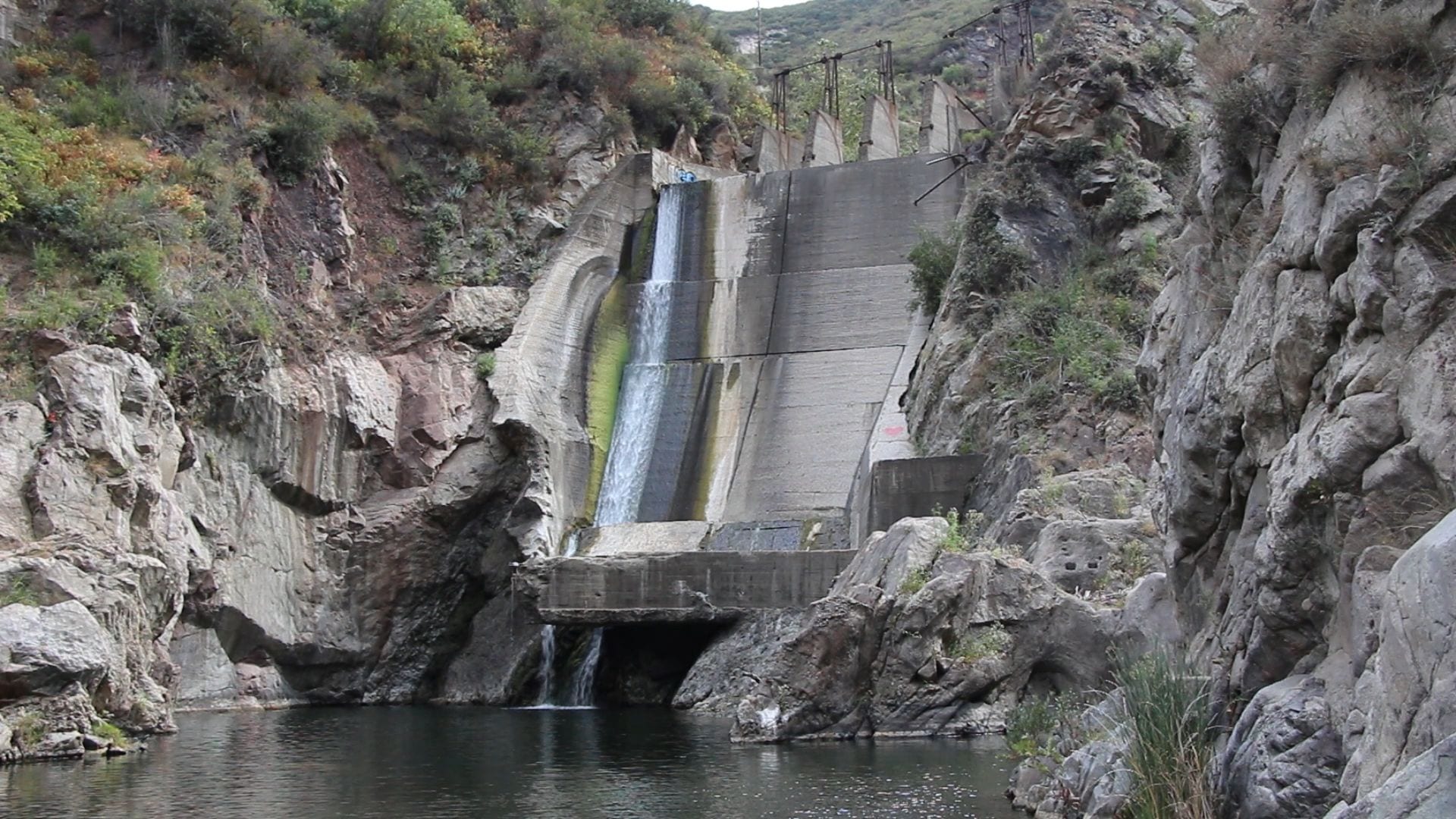
Dam Removal Context
Rindge Dam, a 100-ft high concrete dam and spillway structure built in Malibu Creek on the Rindge family property in 1926 was constructed as a water supply for local ranching, agriculture, and landscape irrigation. The reservoir filled with sediment by the 1940s. There was an attempt to remove the sediment but by the 1950s, it filled again. The dam was then decommissioned in 1967. The land surrounding the dam was then purchased by the California Department of Parks and Recreation as part of Malibu Creek State Park.
Within the Park, Malibu Creek canyon has a striking beauty and remote feel to it that almost makes it hard to believe it’s right next to Los Angeles. Malibu Creek State Park is a component of the Santa Monica Mountains National Recreation Area, which is the largest urban national park in the United States, and contains archaeological resources from Chumash and Tongva people.
Photo: Mike Wier
The Malibu Creek watershed presents a remarkable opportunity for ecosystem restoration, and spans Los Angeles and Ventura Counties. Because the creek cuts through the mountains, it is an important regional ecological corridor linking Santa Monica Bay, Malibu Lagoon and nearby riparian systems that transition from hilly coastal areas to interior valleys.
Rindge Dam disrupted the natural geomorphic, riparian and aesthetic character of Malibu Creek. The dam is located in lower Malibu Creek, three miles upstream of the Pacific Ocean. The structure has trapped more than 780,000 cubic yards of sediment that was naturally destined for the coastline to support beach nourishment and prevent coastal erosion.
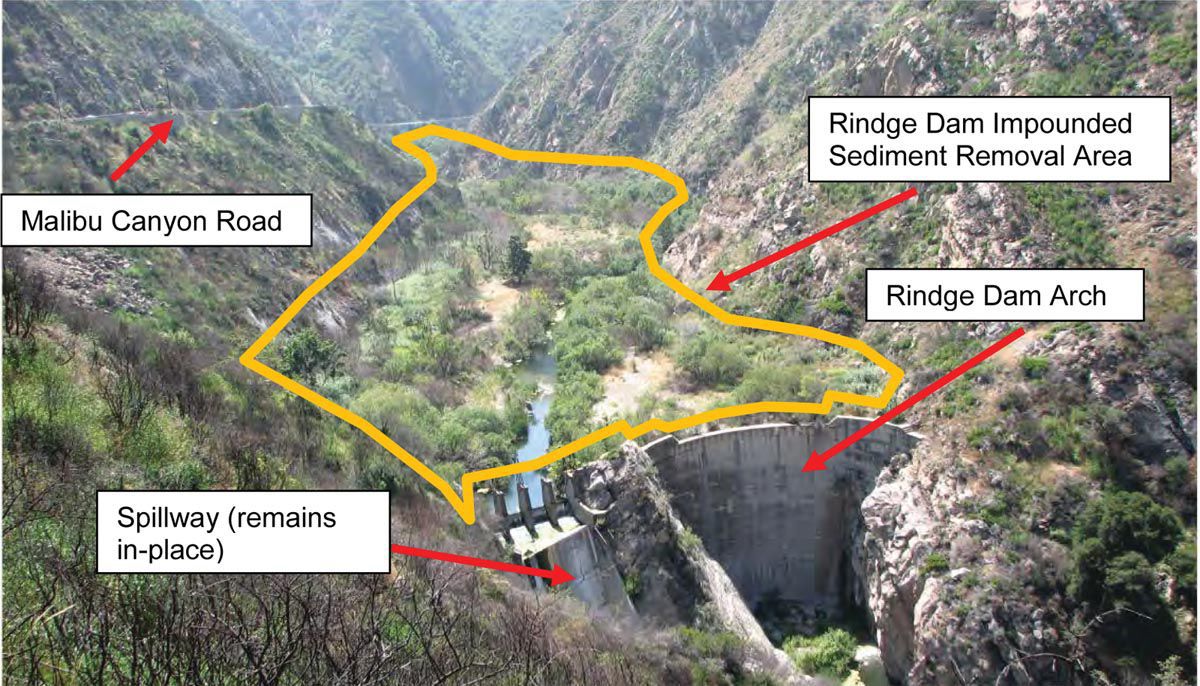
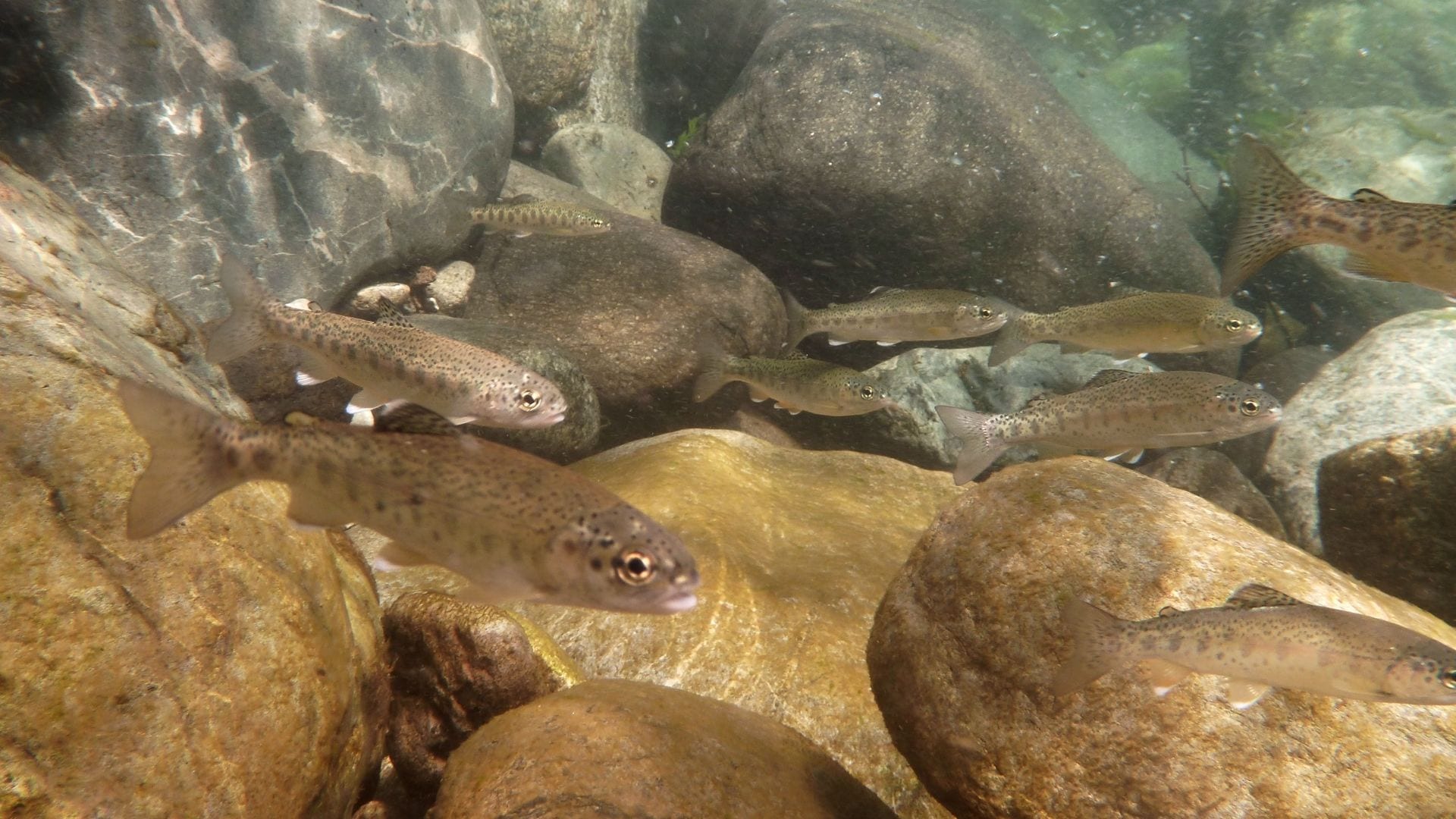
Dam Removal Benefits for Endangered Steelhead
Rindge Dam is a migratory barrier to aquatic and terrestrial species. The lower three miles of Malibu Creek are designated critical habitat for the endangered Southern California steelhead trout, a keystone species blocked from accessing miles of former spawning and rearing habitat in Malibu Creek and tributaries.
Danielle LeFer, Senior Environmental Scientist with California State Parks-- Angeles District, points out that “Rindge Dam removal is a high priority for Southern California steelhead trout recovery because it will allow trout to access 18 miles of high-quality spawning and rearing habitat in the Malibu Creek watershed. Because southern steelhead are adapted to warm water temperatures, and can return to spawn in any creek, they could be an important genetic strain for steelhead survival with climate change, under unpredictable conditions.”
Photo: Glenn Kubacki
The National Marine Fisheries Service designated the Santa Monica Mountains Biogeographic Population Group (BPG) in their 2012 Southern California Steelhead Recovery Plan. Given its important role in facilitating connectivity in the region, and its small size, the Santa Monica Mountains BPG has been subject to extensive life-cycle monitoring efforts over the past 15 years by the Resource Conservation District of the Santa Monica Mountains (RCDSMM). This has allowed genetic analyses of several basins within the region to assess ancestry and characterize basic life history traits of steelhead. Molecular characterization of these trout indicated Malibu Creek is predominately of native, coastal steelhead ancestry.
Rosi Dagit, Senior Conservation Biologist at the RCDSMM says that “Despite the relatively small size of the Santa Monica Mountains BPG, it plays an important role in assuring the viability of populations in Southern California. While steelhead sightings periodically occur after high winter rains in basins further south in California, the Santa Monica Mountains support the southern-most persistent steelhead presence in the region.”
Even though resident fish currently predominate, trout analyzed by molecular genotyping show the genetic signature associated with migration between the ocean and freshwater spawning and rearing habitat. This suggests that they have the capacity to express the anadromous phenotype should opportunities for migration arise.
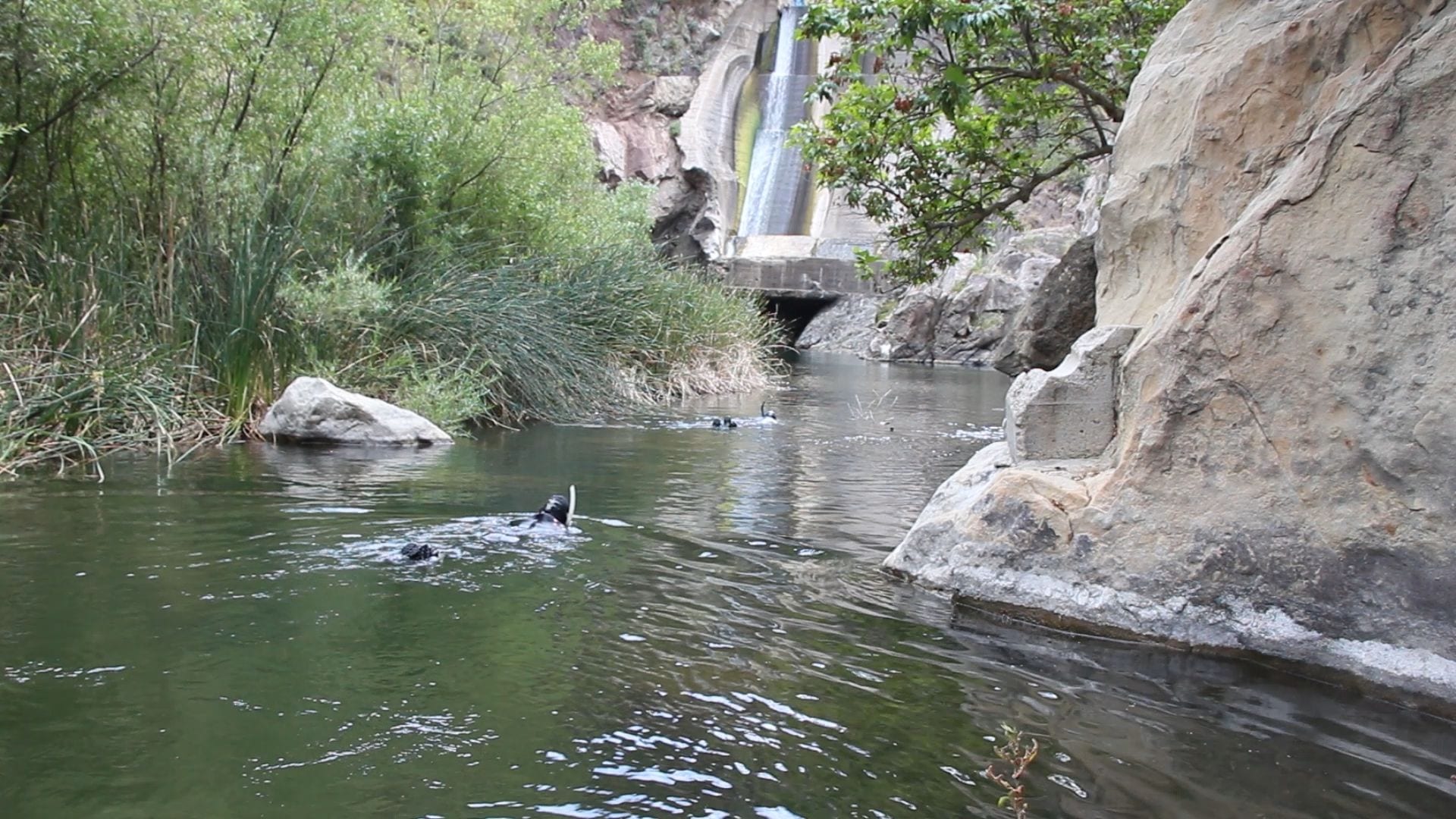
Photo: Rindge Dam Snorkel Survey by Mike Wier
The process to remove Rindge Dam was formalized when the U.S. House of Representatives commissioned the “Malibu Creek Ecosystem Restoration Feasibility Study” in 1992, requesting a solution that improved the Malibu Creek watershed and the Malibu shoreline. The Army Corps of Engineers led this study to investigate ecosystem restoration opportunities within the Malibu Creek watershed, to improve aquatic and riparian ecosystem habitat connectivity and restore more natural sediment transport to the coast. This Feasibility Study completed in 2017 was signed off on in December 2020 by the Chief of Engineers at the Army Corps.
During the Feasibility Study stage, the Locally Preferred Plan (LPP) supported by California Department of Parks and Recreation, became the preferred alternative for dam removal. That alternative calls for removal of the concrete arch dam and spillway, removal of upstream smaller fish passage barriers, and removal of the impounded sediment using traditional mining methods and various deposit locations for that sediment. About one third of impounded sediment (~276,000 cubic yards) would be trucked, barged and deposited along the Malibu shoreline or nearby areas which have been sediment starved since the dam was built. Nearly two-thirds of the impounded sediment would be trucked to a local landfill. The timeframe to transport all the sediment is estimated at 8 years due to seasonal construction and daily trucking restrictions. Flooding and sediment management concerns were raised by Malibu residents during the Feasibility Study. Although extensively addressed by the Army Corps, effective sediment management and public education will be important to promote sustained local support and significant cost savings for the overall project.
Removal of Rindge Dam offers a tractable and significant solution to reconnecting habitat for multiple species in this watershed that is internationally recognized as an exceptional natural resource. Removing Rindge Dam would provide fish passage for federally endangered southern steelhead and access to 18 miles of historical spawning and rearing habitat.
CalTrout will continue to advocate for the removal of obsolete dams and Reconnect Habitat for native salmon and steelhead.
